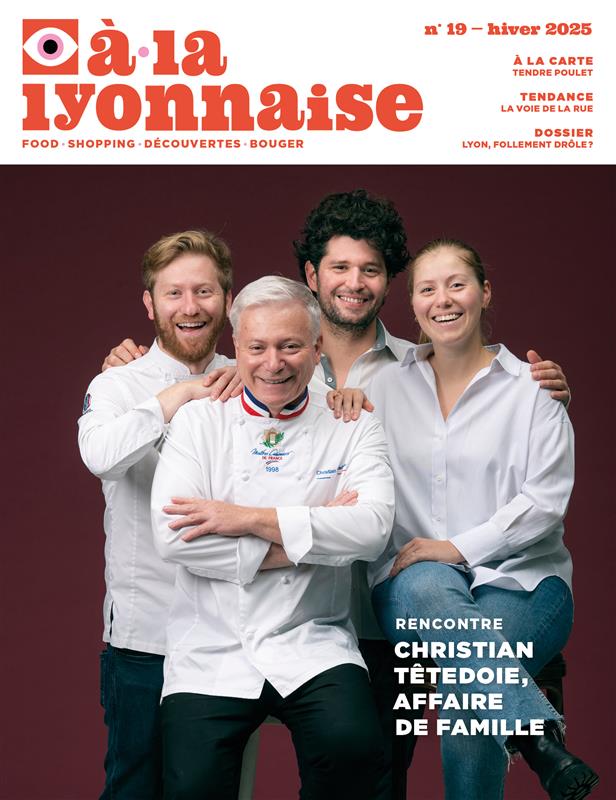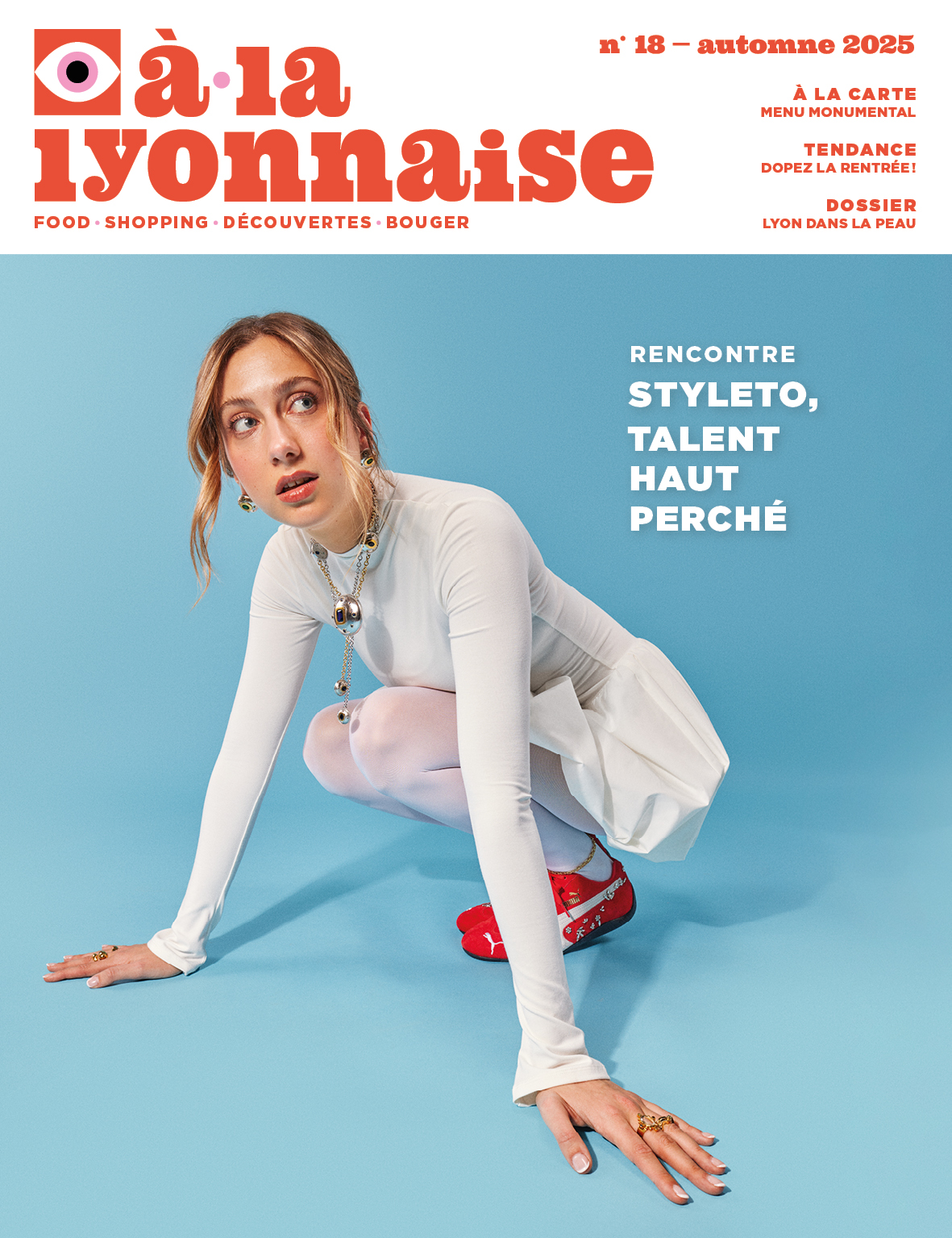Of roots and seeds
Who said that gardening was reserved for country dwellers? Whether it’s in a shared garden, a street garden, the corner of a balcony or even on a window ledge, we have plenty of ideas to get green fingers and reconnect with nature in Lyon and the surrounding area!
Since Covid, gardening has become a bigger part of our daily lives. In a survey conducted by Censuswide in 2021, for the Limonest-based retailer Evergreen Garden Care – La Pause Jardin, 90% of respondents felt that “outdoor spaces played a crucial role during the pandemic” and 6% said that they “made the most of the situation by taking up gardening.” Among the respondents, people in Lyon spent 2.2 hours a week looking after their plants, making them some of the keenest gardeners in France… It is true that a passion for all things green is nothing new here, between the rivers Rhône and Saône. For evidence, you need only look at the long list of famous Lyonnais botanists, including figures such as Jean-Baptiste Goiffon (1658-1730), Pierre Poivre (1719-1786) and Father François Rozier (1734-1793), who created Lyon’s first botanical garden in 1763, on the grounds of the École Royale Vétérinaire de la Guillotière (Royal Veterinary School of Guillotière). What’s more, our city has traditionally been a major centre of rose cultivation and it still boasts a handful of local horticulturists with an international reputation... This historical landscape has left its mark.
Green in the city
“Since it was founded 25 years ago, the association Passe-Jardins (2) has assisted more than 250 shared gardens in the Lyon metropolitan area, which represent around 9000 gardener-citizens,” told us Paola Baril, the association’s director. While in allotments and family gardens, each gardener cultivates their own plot, in shared gardens, the land is cultivated collectively and the harvests are shared among all. Each month, the association holds a citizen information meeting, during which it receives all potential project initiators. The next meetings will be held on the 14th of April and the 5th of May. Maybe you don’t have a garden creation project, but you would like to get your hands muddy. If so, contact a garden near you. “Most collective gardens are happy to welcome new members!”, enthused Paola. Otherwise, you can always start on your own, as there are many possibilities for gardening in the city, whether it’s your living room, a window ledge, a balcony, or even in the street! To bring patches of green back to public spaces, the City of Lyon offers all volunteers the opportunity to create street gardens, regardless of how much (or little) experience they have. Provided that you make a request, you can have a go at planting tree bases, or spaces in gardens and squares, and even create micro-flower beds on the pavement… Since it was introduced in 2005, the scheme (which provides compost, soil, seeds, bulbs and advice to get started), has recorded more than 3000 projects, 1300 of which were created between 2020 and the end of 2021.
Step through the door
The association Passe-Jardins, which we mentioned above, provides a wide selection of books for all, while the Jardin Botanique de Lyon (Botanical Garden of Lyon) regularly runs workshops to learn how to take cuttings, sow seeds, look after indoor plants, care for orchids and more. Don’t hesitate to visit the city’s garden centres too, where you will often find many themed workshops and introductory classes of all kinds. The good news is that you “don’t need a lot of gear to get started,” emphasized Frédérique Roche, creator of the garden centre Gloriette. As for choosing plants, which can be tricky, you should trust your common sense. “In the region of Lyon, the climate is getting ever hotter and drier. In the summer, on a window ledge or balcony, we would recommend Sedum, for example, Mandevilla, a flowering plant that needs very little water, or Tradescantia, also known as Spiderwort,” advised Frédérique Roche, adding that: “the more locally plants are produced, the smaller their carbon footprint will be. What’s more, they will continue to flourish and will be hardier as they are already grown in their intended environment.” Now you have all the info you need, get your gardening gloves on!
“A pair of clippers is always handy, but, in a little space, a spoon will do the job of a shovel very nicely!”
A survey carried out by Censuswide for Pause Jardin on a sample of 1039 people living in France.
To find a directory of shared gardens in the region, visit www.lepassejardins.fr
Three questions for Sandrine Boucher
Journalist and author of La folle histoire des plantes (The amazing history of plants).
“City dwellers have a deep-rooted desire to reconnect with nature”
How did the idea to create the comic book ‘La folle histoire des plantes’ come about?
The co-scriptwriter and cartoonist Matthieu Ferrand and I had already worked together on a comic book published in Les Rues de Lyon [Editor’s note: issue 22]: Le Retour de la Monstrueuse de Lyon (which roughly translates to ‘The Return of the Hideous Tomato of Lyon’, the actual name of a tomato variety from the region of Lyon!). ‘La folle histoire des plantes’ is the story of a tomato named Azade and a grumpy gardener called Guy, who promises not to eat it as long as it keeps on telling him about the histories of plants. Matthieu and I wanted to continue to explore this world, based on an observation that we’re living in paradoxical times. On the one hand, there is a deep-rooted desire, particularly among city dwellers, to reconnect with nature; on the other hand, basic knowledge has been totally lost. We believe that it’s essential to begin to take an interest in what plants are once again, and not only from a botanical point of view. I’ve always wanted to build bridges between the world of plants and humanity in all its aspects, including history, economics and geopolitics. This is what we talk about in ‘La folle histoire des plantes’. While on a reporting assignment in Verdun, I discovered that certain plants were imported along with wars. They remain living memories. Then there was the speculative bubble for Tulips that shook the affluent society of seventeenth-century Holland.
How can we reconnect with nature in the city?
In the Lyon metropolitan area, there are more and more micro-gardens, green spaces, shared gardens… I also love “seed bombs”, the weapon of choice for guerrilla gardening, an activist movement that started in New York in 1973. It’s really funny walking by waste lands where you’ve thrown seed bombs and saying to yourself when you see the plants grow: “I threw those!” There’s also Tête d’Or Park, one of France’s largest urban parks. It’s always a magical moment stepping into the park’s tropical greenhouse in winter. Generally speaking, you just need to keep your eyes open, because nature is everywhere, and there’s always a little plant growing in a crack nearby.
Where can we go to learn to garden and/or develop our knowledge of the plants around us?
Lyon is home to many associations. For instance, Des Espèces Parmi'Lyon helps people discover the fauna and flora they pass by each day without even knowing it. It is also possible to get involved in planting projects, pond creation initiatives, and so on. Based in La Tour-de-Salvagny, Arthropologia is a nature association that works to improve knowledge and protection of insects, which play an essential role in gardens. They are run by knowledgeable people who are passionate about their work. Lastly, the CRBA (Centre de Ressources de Botanique Appliquée – Applied Botany Resource Centre), located in Charly, is an amazing place. They have an experimentation site and regularly organise tours.
Further reading
La folle histoire des plantes, a comic book in two volumes, written by Sandrine Boucher and illustrated by Matthieu Ferrand. Published by Terre Vivante.
You can find it in bookshops and online lafollehistoiredesplantes.com
Address book
Garden centres and more
An urban oasis
In partnership with the garden centre Gloriette, Frédérique Roche (daughter, granddaughter and great-granddaughter of horticulturists from the Croix-Rousse) and Anaïs Chassé came up with the idea for a green corner of paradise tucked away in the heart of the Croix-Rousse. Covering two floors, it contains many indoor and outdoor plants, as well as a wonderful interior decoration range, and everything a Lyonnais gardener could need: loose compost so you can bring home only as much as you need, ecological solid water-retaining products, solutions to help care for unwell plants, and more. The shop has been certified by the quality label ‘Lyon, Ville équitable et durable’ (Lyon, a fair and sustainable city) and adopts a responsible approach that includes sourcing from responsible brands, a strict waste management policy and purchasing outdoor plants from local suppliers whenever possible.
gloriettejardinerie.fr
Fertilizer from the mountains
How to nourish your plants without using chemicals? A solution is offered by the Lyon-based brand La Belle Bouse, which uses manure from the cows of the valley of Beaufortain to make an effective, local fertilizer that’s certified by the consumer association Nature & Progrès. La Belle Bouse works only with suppliers from the Auvergne-Rhône-Alpes region. What’s more, it doesn’t even smell bad!
labellebouse.fr
Expert gardeners to the rescue!
Is your plant out of sorts? Have you tried giving it more water, less water, more sunlight, less sunlight and singing to it, including a few songs by the French artist Pomme (see page XXX), all to no avail? Take a photo of it. Not many people know this, but you can ask questions and send photos of poorly plants to the gardeners at the Jardin Botanique de Lyon (Botanical Garden of Lyon). They will do their utmost to help you save your cherished companion.
You can write to them at the following addresses: [email protected] ; jardin-botanique-lyon.com
A sanctuary for plants
A little bit like animal welfare organisations, the SPV (Société Protectrice des Végétaux) fights for the well-being of plants! This urban nursery located in Lyon’s 7th district works tirelessly to give a second life to unwanted plants. They take in plants that have outgrown their home or are wasting away in a corner, as well as unsold stock from local producers. The founder of the SPV, Nicolas Talliu, saves them all from the rubbish heap and gives them some TLC until they find a new home.
societeprotectricedesvegetaux.com




